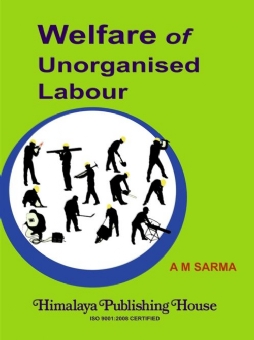Welfare of Unorganised Labour
no information available
The underprivileged labour force in India, as distinct from the organised and unionised sector of labour in industry, constitutes a widely exploited section of the society. What are the conditions of their working environment? What legal provisions have been made for safeguarding their welfare? What are the special measures to be additionally undertaken to cater to specific requirements of each category of labour? These and other questions are dealt by the author in this book. The book contains twenty one chapters, six appendices, a bibliography, and an index. The book will be useful to all those interested in managing welfare of workers in the unorgainsed sector. Contents - Section I 1. Nature of Unorganised Sector 2. Constitutional Safeguards 3. Organising the Unorganised 4. Informal Sector Employment 5. Human Rights 6. Role of State and NGOs 7. HRD Interventions Section II 8. Child Labour 9. Female Labour 10. Contract and Migrant Labour 11. Construction Labour 12. Agricultural / Rural Labour 13. Bonded Labour 14. Casual, Home Based, and Domestic Labour 15. Tribal Labour 16. Plantation, Forest and Fisheries Labour 17. Mines and Quarry, Beedi and Cigar Workers 18. Mathadi, Hamal and Other Manual Workers 19. Lablour in Small and Medium-Sized Enterprises 20. Social Security for the Unorganised Workers 21. Conclusion Section III Appendix A - Main Recommendations of the Second National Commission on Labour 2002 Appendix B - Social Security for the Agricultural Workers Appendix C - Labour Laws Applicable to Voluntary Organisations Appendix D - Unorganised Sector Workers (Conditions of Work and Livelihood Promotion) Bill, 2005 Appendix E - Labour Laws (Salient Features) Appendix F - Glossary ... Read more Read less











